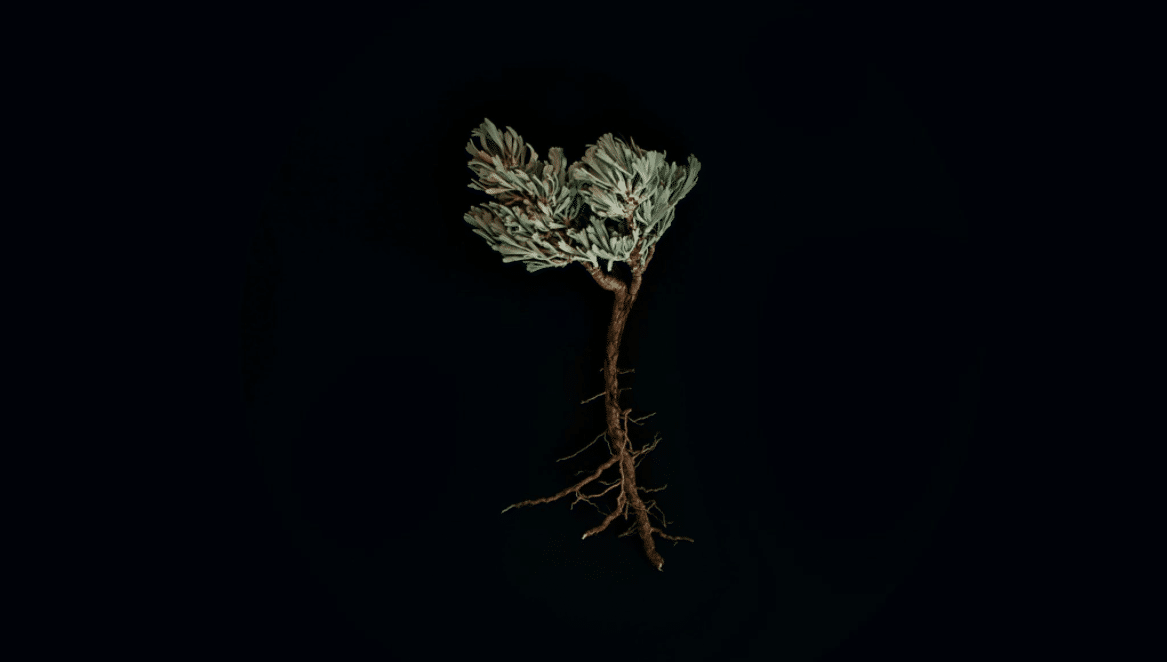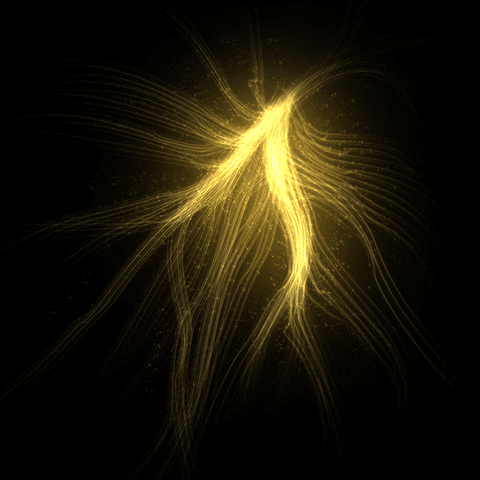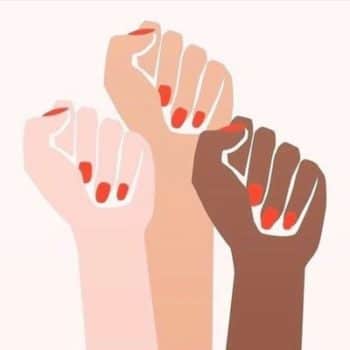Getting to the Root: Processing Past Pain is Necessary to Create a New World

In today’s post-pandemic world we are surrounded by evidence that the many of the common values, beliefs, or worldviews we took for granted decades ago are now crumbling and becoming obsolete. On top of this, many of us are feeling confronted with how the beliefs and patterns inherited from our families of origin are problematic. We are going through a necessary dismantling of patriarchal structures both inside of ourselves and in the world so that something new and better can emerge from the ground up.
What kind of world will eventually come out from the rubble? We are not victims of this change; we do play a role in how things will pan out, but not in the ways that we commonly think. Because we are all connected on an energetic level, when one person grows, heals and evolves, it positively impacts and strengthens the whole. It is precisely those private, unglamorous moments of inner healing and growth that slowly gather and create momentum, supporting more widespread positive change for everyone.
Triggers are undigested pain from the past distorting our perceptions of the present moment.
We often experience hints of these emotional wounds of the past in the form of “triggers,” times when strong emotions arise, exaggerated in intensity compared to the matter at hand, indicating that something deeper is coming up.
When we are triggered, something occurs that bears some emotional similarity to early painful moments in our past and so we become reactive, impulsive, quick to shut down, lash out, cling or walk away. It’s when we go into the modes of fight, flight, or freeze. It’s when the amygdala, the most primitive part of our brains is running the show. There’s little cognitive bandwidth for choices, creativity, compassion or curiosity. We become focused purely on self-preservation, and cannot see the other person or situation clearly.
In triggered moments, our adult consciousness merges with that of the wounded inner child, overshadowing the prefrontal cortex, narrowing our awareness of the situation. As though in a time warp, we see the current situation through the distorted filter of a fearful child. In this defensive mode, with an overwhelmed nervous system, we may traumatically re-enact the past. One could say that our collective history is a series of traumatic re-enactments, over and over again, repeating similar patterns until we become conscious enough to perceive a new choice.
Triggers as points of power.
 In his book Man’s Search for Meaning, Viktor Frankl says “Between stimulus and response there is a space. In that space is our power to choose our response. In our response lies our growth and our freedom.” In other words, our greatest power is the ability to consciously track our inner processes, (thoughts, behaviors, and feelings) name them, and consciously respond to them, rather than be unconsciously controlled by them.
In his book Man’s Search for Meaning, Viktor Frankl says “Between stimulus and response there is a space. In that space is our power to choose our response. In our response lies our growth and our freedom.” In other words, our greatest power is the ability to consciously track our inner processes, (thoughts, behaviors, and feelings) name them, and consciously respond to them, rather than be unconsciously controlled by them.
This power to consciously choose our response to stimuli rather than unconsciously react is a potent form of inner sovereignty, a growing edge for us as humans.
Triggers are times when the space between stimulus and response is basically non-existent.
In a triggered state, our main goal is DEFENSE. If you want to understand our most basic motivations, one can simply “follow the money,” and look at the United States Defense budget to see where our priorities are. In 2020, the U.S. Defense budget was $750 billion, the largest ever and for the first time surpasses the total of all other programs combined. It’s also the biggest defense budget in the world, ahead of China and Russia. This current moment in history is asking us to address inner and outer conflict differently than in the past. It’s asking something much more sophisticated of us as humans, to go beyond primitive defenses of amygdala (war and attack) and into the emotional resilience and intelligence of the prefrontal cortex, where more choices and more possibilities can emerge.
Widening the space between stimulus and response…
There is good news. Neuroscientists tell us that an old pattern cannot be transformed unless it is activated in the brain first. In other words, we cannot create change purely through the intellect or mental understanding alone, we have to “feel it to heal it.” So when we aware that we are triggered, we are not stuck, as is commonly believed, we are actually in a place of power, a power to potentially WIDEN that space between stimulus and response, to expand our awareness and choose something different and thus, to taste true freedom. But something important is needed to help widen that space, something that patriarchy has taught us to abhor. We need to feel a certain degree of emotional resilience within ourselves, in order to have the capacity to pause and observe ourselves and feel agency in that moment, rather than impulsively react, lash out, project or cling. In order to not perpetuate pain.
Patriarchy has created an inner split within us as human beings.
Patriarchy can be defined as a culture in which women are considered “less-than.” We are taught to abandon certain human functions and qualities that are actually the crucial foundation for sustainable life on earth. We have been conditioned for generations to see these qualities and values as frivolous, irrelevant, weak and laughable. These are the functions and values that have long been associated with the feminine, with women and girls, but belong equally to all men and women. These are the functions and qualities that have been consistently taught and embodied by indigenous people to this day. These are qualities such as care, tenderness, compassion, cooperation, mutuality, understanding, intuition, empathy, sensitivity, sovereignty, slowness; functions such as listening, tending, processing, holding, waiting, discernment, understanding, insight, and reflection.
When we can name what we are experiencing, we begin to own it and it ceases to own us.
Patriarchy and capitalism have seduced us into believing that real change is only possible through dramatic, wholesale renovations of self, the belief that with the right products and services, we can quickly re-create ourselves into static, airbrushed perfection. “Progress” in patriarchy is predicated on denial and abandonment of the true self. The fantasy is that when I’m improved enough, the pain will vanish, the disconnection will dissolve. This pervasive capitalist philosophy is anti-human and anti-life. It’s escapism cloaked as innovation. We don’t want process, we want DONE. But the problem is we humans are not a product. We are a process as all living things are, ever-changing, moving and evolving.
It’s time to become intimate with our triggers. What triggers us, when and why?
In order to experience the freedom from the compulsion to repeat the past, personally and collectively, we have to “regress to progress,” meaning become familiar with the original cause of our triggers to transform them and thus, our future. To the degree that we can see triggers as opportunities to digest and process the pain of the past, we can stop repeating the past in destructive ways. When enough of us do this, the world will change. The space between stimulus and response widens and we can choose how we want to respond, and choose the world we want to create, together.
The new world starts with building new neuropathways in our brains, by creating a more regulated nervous system.
Our childhood homes were ground zero for the transfer of patriarchal values, the core values of the systems that are collapsing all around us. Our primary attachment relationships were how these values got installed into our psyches. Values like obedience, disdain for emotions, “toughness”, and constricting gender roles to name a few. These were woven into our fabric of self and then reinforced in the media and our communities. Starting in our childhood homes, we were raised by men and women already split off from themselves, to some degree, due to their own upbringing in a disconnected culture. The main person we needed emotional survival, our mothers, were often themselves devalued and objectified in society as well. The Mother Wound is how patriarchy gets passed down from mother to child, woven into our attachment blueprint.
For many of us, familial”love”was laced with control and fear, which still haunts us today.
It wasn’t until around the 1950’s that many parents began to even consider the care of children beyond their physical survival. In 1946, Dr. Benjamin Spock published The Common Sense Book of Baby and Child Care, which first introduced the idea that children’s feelings and individuality were factors to consider in addition to just physical care and discipline. Up to this point, mainstream parenting advice was focused on teaching children to “obey” and physical punishment was common in homes, schools and churches. One of my clients once described how growing up in a rural area, her parents saw the care of children not that different from the care of animals. The children were there to serve and obey the parents, end of story.
This means that as adults, many of our parents or grandparents experienced this kind of “old school parenting” and so many of us are still living with the generational impacts of an early childhood deficit of connection, love, respect, safety, compassion and belonging. We may cope with it with some form of numbing out. Statistics show that during the height COVID-19, sales of alcohol, cannabis, and guns were through the roof. Under stress, many of us try to soothe ourselves through our triggers without many tools, mentors or models.
Triggers show us where our painful past is still showing up in the present. They offer us the chance to give ourselves the unconditional love we needed then, now.
For many families in patriarchal cultures, love has often been laced with dominance and control. We desperately needed our parents’ approval but feared their wrath at the same time. Many parents were taught that effective parenting manifested as obedient, compliant, silent children. To create this desired outcome, love was blended with control and fear.
The truth is that problematic behavior is justified in the context of the painful childhood situations that they originated from. If we saw what people actually endured as children, it would break our hearts. However, as adults now, we must take radical responsibility to become aware, and not repeat or perpetuate our past pain in present moment. In triggered moments, we are living our current adult lives but as though we are children in the past, all while being totally unaware of it. It’s exhausting to live at the mercy of our triggers. It’s time to break free of this.
Our triggers show us where healing is needed.
Without this awareness of how the early context of our development impacts our adult behaviors we are doomed to a mere slit of space between stimulus and response. We feel frustrated, trapped in looping outer events and emotional rollercoasters that keep pointing us back to the original context, the emotional landscape of our childhoods, for the purpose of being re-worked and transformed, so that they no longer need to be repeated that way again.
In other words, we can’t move on to a new, better world until we’ve sufficiently dealt with the old one, as it lives in us.
For many, the main emotion right now is grief, and that’s always a good sign. When we grieve, we are letting go of the past, processing our experiences to make room for the new. However, it’s crucial now to take our grief even deeper, into the deeper grief of childhood, and those early needs for nurturance and reassurance that we missed. Creating that inner safety to feel that deeper grief is a solid foundation for a world that supports humans not just in surviving, but in thriving.
It’s time to re-configure our relationship with the self.
To create a new world that meets human needs, in which we can all flourish, we have to get in touch with the ways in which the old world, the one that is passing away, has denied those needs, shamed those needs, and the suffering that denial and shaming have created. This step can’t be bypassed. Insodoing, we reclaim those values that support and honor life, including compassion, generosity, discernment, understanding and love, and infuse our worldview with them. In other words, we cannot implement wider policies that embody love, compassion and connection if we haven’t claimed these as part of our own evolving identities and authentic personal values.
The solution to the pain is inside that pain, not in flight from it, not in avoiding it or attacking it, it’s by embracing it. But we have to begin building that emotional resilience to meet the pain through an ongoing practice of tending to the self by embodying gentleness, kindness, and honesty with ourselves.
Triggers offer us a chance to ‘get to the root’ of our persistent suffering and finally find peace.
This process of getting to the root of our triggers and liberating ourselves from childhood pain is a process that is long, messy, unglamorous and multi-layered. It takes commitment, focus and persistence. For those of us with trauma and abuse in our history, professional support is key; working long-term with a skilled psychotherapist well-experienced in attachment wounds is crucial to lasting healing and transformation.
Through working with our triggers, we can embrace the child within who still feels trapped by the residues of traumas of the past. Through “inner mothering” we validate the feelings of fear, pain and suffering we went through as children and update the false conclusions we came to back then. Those false conclusions which had solidified into painful patterns and negative beliefs that have shaped our perception of reality as adults. Originally they were based on a child’s perceptions in a certain period of time. Now we can differentiate from them, and what see is actually true now, helping us authentically embody more sovereignty as adults. This creates closure from the past and liberates us to live lives based on truth, love, freedom and fulfillment now. This is about breaking cycles of intergenerational pain and experiencing the peace of the present moment which is our birthright. This is about widening that space between trigger and response.
A process to support you in triggered moments…
Today I’d like to share a process with you that you can use to practice on your own to increasingly become more aware of the deeper emotions that triggers may be bringing up for you and how to work with them. (I use myself and my inner child as an example for illustration.) This process may feel awkward in the beginning but gets easier over time with consistent practice.
- Acknowledge the feelings that are coming up for your inner child.
When feeling an overwhelming emotion, pause, take a breath, name the feeling, and connect with your inner child.
Example: “Little Bethany, I see you’re feeling really sad right now. You’re not alone. I’m here with you in this sadness. It’s OK to feel what you’re feeling. I’ve got you.”
- Identify the Original Situation of the past.
Reflect and inquire into what past painful situation the feeling is arising from. A question to ask yourself is: What situation from the past does this emotion remind me of? When did I feel this way as a child?
Example: “I realize that this sadness reminds me of the despair I felt when I was stuck in my childhood home and my parents were constantly fighting. I felt really unsafe, but there was no safe adult to run to. I was really anxious and afraid.”
- Empathize with the feelings of the past that are coming up for the Inner Child.
Once you have some sense of the situation of the past from which the feelings are arising, validate the legitimacy of these feelings in that context of the past. Empathize with the inner child, mirroring back the feelings and where they come from. Let the feelings flow.
Example: “Ah, I see how this sadness you’re feeling about being stuck at home due to the pandemic is bringing up deeper sadness about how you were stuck at home as a kid. That makes total sense to me. I can see how the mandate to quarantine would remind you of constantly being sent to your room when Mom and Dad would fight for hours and you would feel really afraid. No one came to comfort you. No one came to reassure you. Of course, you would feel sad. Your feelings are totally normal and natural in this situation, given your childhood history.”
You can also say things like:
I’m so sorry you went through that. It wasn’t your fault.
You didn’t do anything wrong. You were an innocent child.
Mom and Dad had their own wounds and challenges and could not give you what you needed. Even so, you have always been good, lovable, whole exactly as you are.
Your emotional needs are healthy, normal, and were totally appropriate in that situation.
- Differentiate the Present from the Past.
Reassure the inner child that while this current situation FEELS very similar to the old situation, it’s actually very different. Provide evidence of how he/she is SAFE NOW.
“Little Bethany, while this situation of quarantine understandably feels very similar to the past when we had to endure traumatic loneliness as a kid, stuck in our room, the truth is that now is very different from back then. You are no longer trapped. We have freedom and many choices even while at home. No one can overpower or abandon you anymore. I’m here as your adult self, Big Bethany, to keep you safe, reassure you, protect you, and remind you that those days of despair and powerlessness are over because you survived childhood. All your feelings are welcome now. I’m here for you and I love you no matter what.”
Other things you can also say:
Your feelings are all OK with me.
I love supporting your freedom and individuality.
I have plenty of support in my own life. You don’t have to take care of me. I’m here for YOU.
I’m the adult and you are the child. You get to receive.
You get to be a child now, and focus on growing, playing, learning and exploring.
All is well. You can rest in me.
- Provide a Positive Vision.
The Inner child needs to have a positive, nurturing vision of the present and future to trust that life is safe, despite past experiences. Explain in simple language that the pain of the past is over and the future will continue to get better and better. No matter what happens in the outer world, she will always be safe within you.
Example: “Little Bethany, life will continue to get better and better as we heal from the past and allow all our emotions to be felt. Those emotions are showing us what happened in the past. We no longer need to fear them in the future. They already happened. And so it’s safe now for us to step into the future expecting good things and healthy connections. I’m always here with you to keep you safe and support your freedom. All is well.”
- Take an Empowered Action that anchors the positive Vision.
The last step is to take some concrete action that is affirming and demonstrates the truth of the positive vision. It could be as simple as doing something that was not possible to do as a child, perhaps setting a boundary, saying what you really want, or even walking out the door to show that you are free to make your own choices.
Example in the context of feeling trapped: “Little Bethany, we’re not trapped anymore. Look, we can choose to go outside right now, take a walk and feel the sun on our skin.” Another example of an action could be confirming with the person I share a home with, my partner, that they do not expect me to endure their emotional distress, that they understand that they are responsible for their own feelings. Having my partner lovingly confirm this helps Little Bethany feel, in a visceral way, that the present is very different from the past when she had to endure the weight of her parents’ constant distress. The inner child increasingly internalizes the truth that now she is loved and free. Having someone in your life on a similar path helps to ground one in the truth of the present moment.
We have to learn to mother ourselves to birth a new world.
Patriarchy is not a real power. Its manifestations of power-over, dominance, and cruelty are compensations for powerlessness; it is fear masquerading as power. Now we must to get to the root within each of our psyches that has created suffering for generations culminating in the mounting crises that surround us now. We each have our own inheritance of pain to process as part of the collective. We can’t skip the deconstruction phase and rush to construction of something new.
This is not the kind of solution that will appear on the nightly news or in the newspapers, nor is it the kind of quick, simple solution that many people want to hear. This is the heroic work of laboring to birth the authentic self, underneath the patriarchal adaptations we had to take on to survive in this culture. This is the long-term labor of de-coupling our sense of emotional safety from domination, injustice, and control from the wider culture and our wounded families of origin. As more of us heal, a new world is slowly taking shape.
Copyright Bethany Webster 2020-2023 All rights Reserved.
Art credit: Photo by Blake Weyland on Unsplash
Art credit: Gif by @xponentialdesign on Giphy
Resources on Trauma:
- Bethany Webster. “Healing from Trauma: What it really Takes to Liberate your Brilliance”
- Peter Levine-Waking the Tiger: Healing Trauma. 1997
- Bessel Van Der Kolk- The Body Keeps the Score: Brain, Mind, and Body in the Healing of Trauma. 2014
- Pete Walker- Complex PTSD: From Surviving to Thriving. 2013
- Laurence Heller, PhD & Aline LaPierre, PsyD- Healing Developmental Trauma: How Early Trauma Affects Self-Regulation, Self-Image, and the Capacity for Relationship. 2012
- Jasmin Lee Cori. Healing from Trauma: A Survivor’s Guide to Healing your Symptoms and Reclaiming Your Life. 2008.
- Tian Dayton- Emotional Sobriety: From Relationship Trauma to Resilience and Balance. 2007.
- Wendy Maltz- The Sexual Healing Journey: A Guide for Survivors of Sexual Abuse. 2012.
- Alice Miller- Free From Lies: Discovering Your True Needs. 2009.
- Alyce Barry, Cliff Barry and Cindy Kalman- Practically Shameless: How Shadow Work Helped Me Find My Voice, My Path, and My Inner Gold. 2008.
- Belleruth Naparstek- Invisible Heroes: Survivors of Trauma and How They Heal. 2005.
- MaryBeth Williams, Soili Poijula- The PTSD Workbook: Simple, Effective Techniques for Overcoming Traumatic Stress Symptoms. 2013.
- Babette Rothschild. Eight Keys to Safe Trauma Recovery: Take -Charge Strategies For Reclaiming your Life. 2010.
- Hal & Sidra Stone- Embracing Ourselves: The Voice Dialogue Manual. 1998.
- Steve J. Wolin & Sybil Wolin- The Resilient Self: How Survivors of Troubled Families Rise Above Adversity. 1993.




